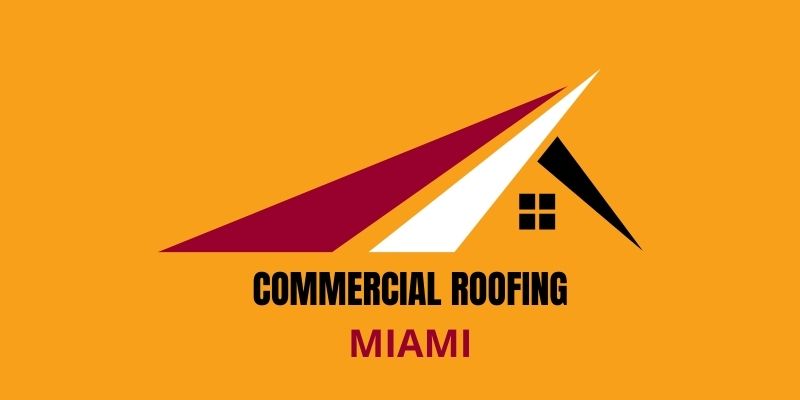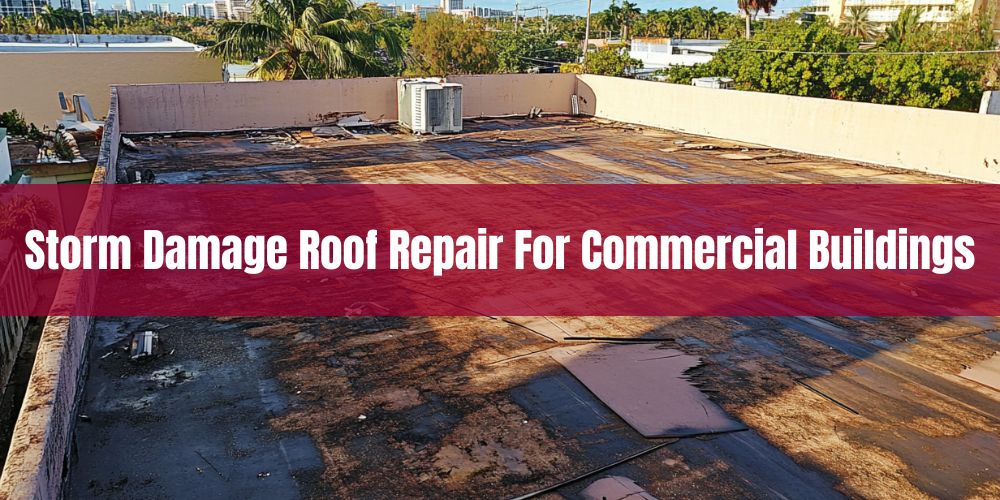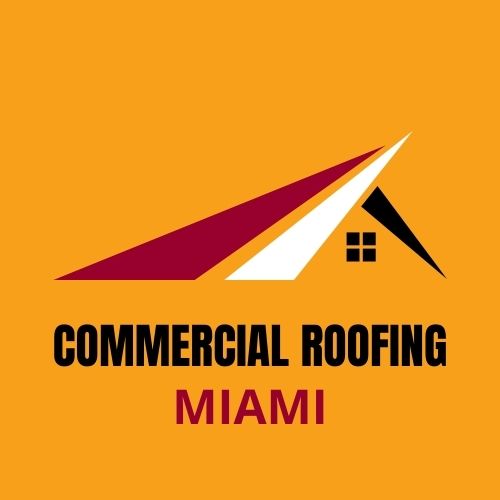Storm damage commercial roof repair involves the inspection, maintenance, and restoration of commercial roofing systems that have suffered damage due to severe weather events. These can include heavy winds, hail, lightning, or fallen debris, all of which can compromise the structural integrity of a roof. Repair processes typically involve assessing the extent of the damage, removing debris, sealing leaks, and replacing damaged materials to restore the roof's functionality and prevent further issues. This specialized repair service is crucial for minimizing downtime and protecting the investments made in a commercial building. Commercial Roofing Miami provide storm damage commercial roof repair services across the Miami, Florida area.
What Is Storm Damage Commercial Roof Repair?
Storm Damage Commercial Roof Repair refers to the process of addressing and fixing damages caused to commercial roofing systems due to severe weather events such as hurricanes, strong winds, heavy rain, and hail. This type of repair is crucial in maintaining the integrity and longevity of commercial buildings, especially in regions prone to storms. The repair process involves assessing the extent of damage, which can include leaks, punctures, and structural damage, followed by the application of appropriate roofing materials and techniques to restore the roof's functionality. Common materials used in storm damage repairs include reinforced membranes, sealants, and metal roofing components, depending on the severity and type of damage. Experienced contractors are typically hired to ensure that the repairs are conducted safely and effectively, adhering to local building codes and standards. Regular inspections and maintenance can help identify potential vulnerabilities, minimizing future storm-related damages.
Miami, Florida's tropical monsoon climate, characterized by high temperatures, humidity, and significant precipitation during the hurricane season, poses unique challenges for commercial roofs. Contractors in the area often use storm-resistant materials and employ installation methods such as reinforced membranes and specialized sealants that can withstand the extreme weather conditions typical of Miami.
Have a question about an upcoming project?
How Often Are Miami Roofs Damaged By Storms?
Miami roofs are frequently damaged by storms due to the region's high storm activity. Miami's location makes it susceptible to hurricanes, tropical storms, and heavy rainfall, which can cause significant damage to roofing structures. Regular maintenance and inspections are crucial in minimizing the impact of these weather events.
- Storm Frequency: Miami experiences numerous tropical storms and hurricanes annually.
- Hurricane Season: Spanning June to November, it brings increased risk of roof damage.
- Wind Speeds: High winds during storms often lead to commercial roof system damage.
- Heavy Rainfall: Intense rain can lead to leaks and water intrusion, damaging roofing integrity.
- Roof Maintenance: Regular inspections help identify and fix vulnerabilities before storms strike.
1. Storm Frequency: Miami experiences numerous tropical storms and hurricanes annually.
Storm frequency is the regular occurrence of severe weather events that can lead to significant damage to commercial roofing structures. The high storm frequency in Miami means that commercial roofs are often subjected to extreme weather conditions, increasing the likelihood of damage. This frequency of tropical storms and hurricanes necessitates the use of durable roofing materials that can withstand high winds and heavy rainfall. Regular maintenance and prompt repairs are crucial to minimizing damage and ensuring the longevity of commercial roofs in such a storm-prone area. Considering the susceptibility to damage, commercial building owners in Miami are advised to schedule frequent roof inspections, especially before and after the hurricane season. Installing impact-resistant materials and enhancing roof drainage systems can also help mitigate the effects of severe storms. These preventative measures not only protect the integrity of the roofing system but can also help in avoiding costly repairs and ensuring the safety of building occupants.
2. Hurricane Season: Spanning June to November, it brings increased risk of roof damage
Hurricane season is a period marked by increased tropical cyclone activity, leading to higher potential for severe roof damage due to strong winds and torrential rain. During hurricane season, commercial buildings in Miami are particularly susceptible to storm damage, leading to frequent repairs and replacements of roofing materials. This increased risk highlights the necessity for robust and durable roofing systems that can withstand the intense weather associated with these storms. Selecting a roofing material that offers high wind resistance and water-tight sealing features can significantly reduce the impact of hurricanes on commercial buildings. Regular maintenance checks and strengthening of the roofing structure before the hurricane season can help minimize potential damages. Investing in hurricane-resistant roofing not only extends the lifespan of the roof but also reduces the overall cost and disruption caused by frequent storm damages.
3. Wind Speeds: High winds during storms often lead to commercial roof system damage
High wind speeds during tropical storms and hurricanes create powerful uplift forces that can damage or dislodge components of commercial roofing systems. In Miami, where storm activity is frequent and severe, these winds often strain seams, flashing, and mechanical attachments—especially on wide-span, low-slope commercial roofs. Commercial buildings typically use systems like mechanically fastened TPO, fully adhered PVC, or reinforced modified bitumen—each requiring precise installation to resist wind uplift. When wind breaches the edge flashing or roofing membrane, it can peel back large sections, leading to rapid water intrusion. To mitigate this risk, roofs in Miami must be designed to meet enhanced wind-load requirements, with perimeter reinforcement, upgraded fastening patterns, and wind-rated materials. Pre- and post-storm inspections are essential for identifying early signs of stress, and all work should be performed by professionals familiar with Miami-Dade's stringent roofing standards for wind resistance.
4. Heavy Rainfall: Intense rain can lead to leaks and water intrusion, damaging roofing integrity.
Heavy rainfall refers to periods of significant precipitation that can compromise roofing systems by causing leaks and water intrusion, thereby weakening the roof's structural integrity. Heavy rainfall is a frequent issue for commercial roofs in Miami due to the city's tropical climate, which contributes to high precipitation levels and intense storm activity. The risk of leaks and water damage to roofing systems is especially heightened during storm seasons, influencing the longevity and reliability of commercial roofing systems. To mitigate damage from heavy rainfall, commercial buildings can benefit from rigorous roof maintenance programs that include regular inspections and repairs. These programs help detect and address vulnerabilities such as damaged flashing, clogged drainage systems, or worn-out sealants before severe weather events exacerbate them. Incorporating waterproof membranes and ensuring adequate roof slope for proper drainage can significantly enhance the roof's resilience against water intrusion.
5. Roof Maintenance: Regular inspections help identify and fix vulnerabilities before storms strike.
Roof maintenance involves conducting periodic inspections to proactively detect and address issues, ensuring the building's roof can withstand severe weather events like storms. Frequent storms in Miami can cause significant damage to roofs, but regular maintenance helps reduce this risk by addressing vulnerabilities before they are exposed to severe weather conditions. By identifying and repairing weak spots, commercial properties are better protected against the intense conditions often seen in Miami's storm seasons. Implementing a consistent roof maintenance schedule reduces the likelihood of costly storm-related damages that could disrupt business operations. Additionally, well-maintained roofs contribute to the structural integrity of commercial buildings, providing long-term protection and reducing the need for emergency repairs. Ensuring that roof materials, drainage systems, and flashing are all in proper working order enhances the roof's resilience against heavy rainfall and high winds, which are typical in Miami's climate.
What Are The Urgent Steps For Storm Damage Roof Repair?
Immediately assess damage and secure the roof to prevent further issues. Quick action is essential to mitigate water leakage and structural damage caused by storms. Contact a professional roofing contractor to conduct a thorough inspection and recommend necessary repairs.
- Inspect the roof visually for any obvious signs of damage or leaks.
- Document the damage with clear photographs and detailed notes for insurance purposes.
- Temporarily cover exposed areas with tarps or waterproof materials to prevent further water damage.
- Contact your insurance company to report the damage and begin the claim process.
- Engage a professional roofing contractor for a comprehensive inspection and repair plan.
1. Inspect the roof visually for any obvious signs of damage or leaks
A visual roof inspection involves looking for visible indicators of roof integrity issues, such as missing or damaged materials, water stains, or punctures that may indicate leaks. Regular visual inspections of commercial roofs are crucial after a storm, as they help identify immediate damage such as displaced flashing or torn membranes, preventing small issues from escalating. Early detection of damage during these inspections allows for quick action, reducing potential water ingress that can lead to interior damage and costly repairs. Conducting these visual checks as part of routine maintenance ensures that any minor damages and potential problems are found and addressed before they compromise the building's overall integrity. Detailed inspections help maintain the roof’s performance and longevity, supporting the stability of a commercial property against future severe weather challenges.
2. Document the damage with clear photographs and detailed notes for insurance purposes
Documenting the damage with clear photographs and detailed notes ensures accurate representation of the roof's condition, which is critical for processing insurance claims following a storm. One of the most urgent steps in storm damage roof repair is to thoroughly document all visible damage, as this serves as crucial evidence for insurance companies when assessing claims. Without thorough documentation, commercial property owners may face challenges in securing adequate insurance compensation, which can delay necessary repairs and increase financial burdens. Clear photographs should capture the extent and severity of the damage from different angles, while detailed notes provide context such as the date of the storm, specific areas affected, and any immediate risks posed to building operations. Proper documentation not only facilitates the insurance claims process but also assists roofing professionals in assessing repair needs and creating an effective restoration plan. This meticulous approach is vital for quickly restoring the roof's integrity, minimizing potential downtime, and ensuring long-term protection of the commercial property.
3. Temporarily cover exposed areas with tarps or waterproof materials to prevent further water damage
Temporarily covering exposed areas with tarps or waterproof materials involves placing protective layers over damaged sections of a roof to mitigate water infiltration until permanent repairs can be made. During storm damage roof repair, covering exposed areas is crucial to prevent further deterioration of the commercial roofing system, especially as immediate repairs may not always be possible. Ensuring these areas are protected from additional water intrusion helps maintain the structural integrity of the roof and avoid costly water-related damage inside the building. This proactive measure can stabilize the situation, buying time to assess the full extent of damages and plan for more comprehensive repairs. Utilizing durable tarps or specially designed waterproof membranes can provide adequate temporary protection, helping maintain business operations by preventing water from entering the facility during ongoing adverse weather conditions. Additionally, regular inspections and maintenance can ensure tarps are secure and adequate until a permanent solution is implemented.
4. Contact your insurance company to report the damage and begin the claim process.
Contacting your insurance company is the initial step in communicating and documenting the roof damage to start the evaluation and compensation procedure. Promptly reporting storm damage to your commercial roofing to your insurance company is critical for accelerating the claim process and ensuring financial support for repairs. This step is among the urgent actions needed when dealing with storm-induced roof damage to mitigate further risks and restore the building's functionality. Failure to immediately report damages can lead to complications or denial of claims, potentially increasing out-of-pocket repair costs. A quick response, detailed documentation, and an expert inspection report enhance the clarity and accuracy of the claim. Establishing a clear communication path with your insurance provider can ensure all necessary documentation is correctly submitted and expedite the approval and repair timelines.
5. Engage a professional roofing contractor for a comprehensive inspection and repair plan.
Engaging a professional roofing contractor ensures a detailed evaluation of the commercial roof’s current condition, creating a strategic plan for necessary repairs to maintain its structural integrity and functionality. After a storm, timely commercial roof assessments by expert contractors are crucial for identifying damage that might affect the building's safety and weatherproofing. Contractors can promptly address and repair issues such as leaks or weakened spots, preventing further deterioration and potential costly damage. Professional roofing contractors come equipped with the expertise to detect even subtle signs of wear and tear that can go unnoticed without a trained eye. Their comprehensive inspection techniques help prioritize repairs and extend the life of the roofing system. This approach supports the maintenance of the building’s structural safety and helps prevent unexpected disruptions in business operations.
How To Choose A Storm Damage Roof Repair Service In Miami?
Choose a roof repair service in Miami by evaluating their reputation, experience, and insurance knowledge. Understanding local weather patterns, these professionals should offer reliable suggestions for storm-resilient materials and methods. Additionally, an ideal service should provide quick response times for urgent repairs to mitigate further damage.
- Reputation: Research company reviews for consistent customer satisfaction and reliability.
- Licensing and Insurance: Ensure the service is fully licensed and insured for Miami operations.
- Experience with Storm Damage: Look for companies with expertise in storm-related roof repairs.
- Material Recommendations: They should suggest materials that withstand Miami’s stormy climate.
- Response Time: Quick, efficient response to prevent additional damage to your property.
1. Reputation: Research company reviews for consistent customer satisfaction and reliability.
A company's reputation reflects its track record in delivering quality roofing services and maintaining customer satisfaction, which is crucial for reliable commercial roofing solutions. When choosing a storm damage roof repair service in Miami, examining a company's reputation helps ensure they are trusted, reliable, and capable of providing satisfactory service. Companies with consistently positive reviews are more likely to deliver dependable repairs and maintain roofing integrity in challenging weather conditions. Evaluating customer testimonials and ratings can provide insights into a company's expertise, communication skills, and commitment to quality workmanship. This evaluation aids in making informed decisions, thereby ensuring that the chosen service provider has the experience necessary to handle the unique challenges posed by Miami's climate. As such, investing in a reputable commercial roofing company not only safeguards your property but also provides peace of mind through their proven track record.
2. Licensing and Insurance: Ensure the service is fully licensed and insured for Miami operations
Licensing and insurance in commercial roofing ensure that a roofing company complies with local regulatory standards and provides financial protection against potential liabilities and damages during Miami operations. When choosing a storm damage roof repair service in Miami, ensuring that the contractor is both licensed and insured is crucial as it provides a level of assurance that they adhere to local building codes and safety regulations. This compliance minimizes the risk of shoddy workmanship, which can lead to further damage and costly repairs in the future. Insurance protects commercial property owners from potential legal and financial liabilities should any accidents or damages occur during roofing operations. Licensed contractors have demonstrated their ability to meet industry standards, reducing the likelihood of roof failures that could expose businesses to environmental elements and operational disruptions. By verifying these credentials, you safeguard your investment and ensure your commercial property remains secure and resilient against future storms.
3. Experience with Storm Damage: Look for companies with expertise in storm-related roof repairs.
Experience with storm damage refers to a roofing company's proficiency in identifying and repairing damage caused to commercial roofs by severe weather events like hurricanes or hailstorms. Choosing a roofing company with substantial expertise in storm-related repairs ensures that your commercial property in Miami remains safeguarded against frequent severe weather conditions. Professionals knowledgeable in storm damage can promptly assess and address issues such as leaks, structural compromise, and material degradation, securing the integrity of your roof. Miami's storm-prone environment necessitates a proactive approach to commercial roof maintenance and repair. By engaging a company experienced in handling the unique challenges posed by storms, businesses can effectively reduce downtime and mitigate potential losses. Investing in skilled storm damage repair services ensures longevity and reliability, enhancing the resilience of commercial roofing systems against future weather events.
4. Material Recommendations: They should suggest materials that withstand Miami’s stormy climate
Material recommendations focus on identifying roofing materials designed to endure high winds, heavy rainfall, and other adverse weather conditions typical of Miami's climate. Choosing the right roofing material is essential for surviving Miami’s stormy conditions because storms can severely compromise roof integrity. Selecting materials resilient to these elements helps prevent damage, leaks, and costly storm-related repairs. Options such as metal roofing and thermoplastic polyolefin (TPO) are known for their durability and resistance to extreme weather. These materials stand up well against high winds and heavy rains. Regular inspections and maintenance ensure the materials retain their protective properties and extend the roof's lifespan. Investing in storm-resistant materials enhances safety and minimizes the risk of substantial damage during Miami’s frequent tropical storms and hurricanes.
5. Response Time: Quick, efficient response to prevent additional damage to your property.
Response time refers to how swiftly a roofing professional can address and repair issues to prevent further damage to a commercial property. A rapid response is crucial when selecting a storm damage roof repair service in Miami due to the area's frequent severe weather events. Timely intervention by roofing experts can prevent water leaks, structural damage, and costly downtime for commercial operations. Ensuring a roofing contractor has a proven track record for quick response times means reduced risk of additional weather-related deterioration after a storm. This efficiency in addressing storm damage can also help maintain compliance with insurance requirements and secure your property's asset value. Overall, a prompt response contributes to prolonged roof lifespan and minimal disruption to business activities.


